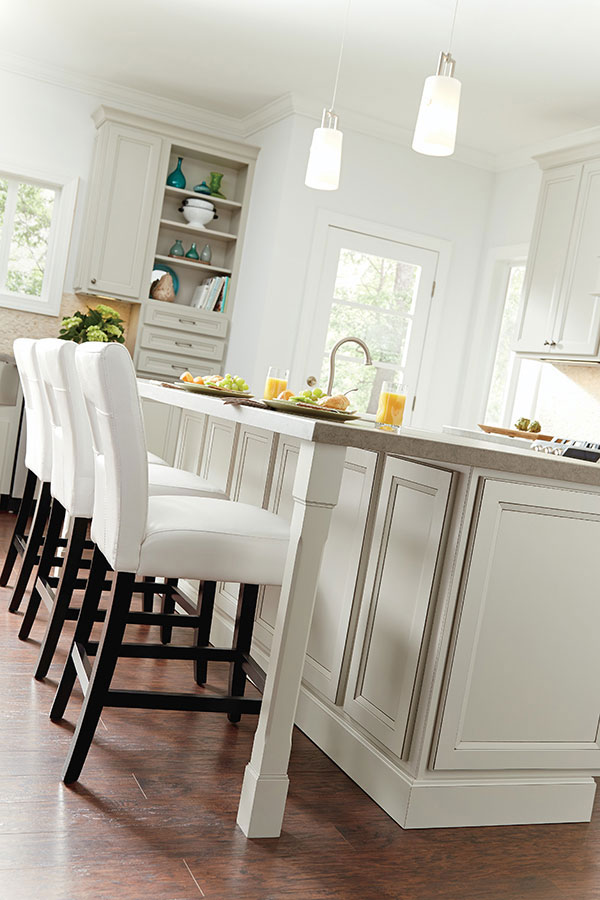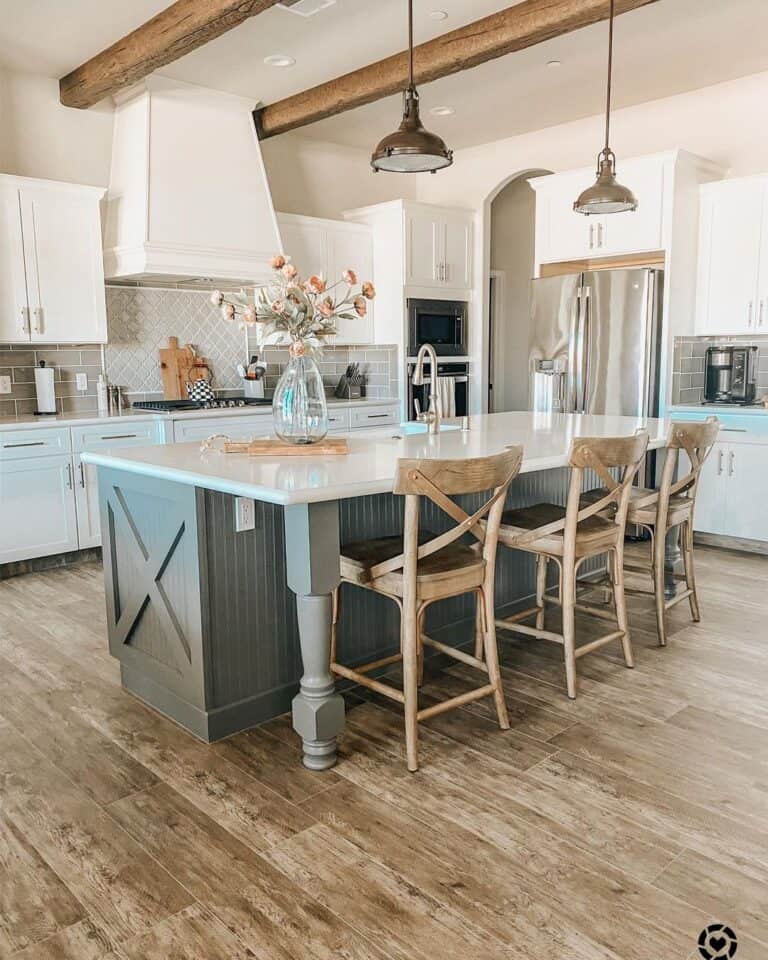Discover Affordable and Chic Solutions in Legs For Kitchen Island Updates
Discover Affordable and Chic Solutions in Legs For Kitchen Island Updates
Blog Article
Trick Considerations for Discovering the most effective Legs For Kitchen Area Island for Your Layout
When picking the suitable legs for your kitchen island, a number of vital considerations come into play that can dramatically impact both functionality and aesthetics. The option of material, style, and elevation have to line up with your total cooking area design to ensure a harmonious look.
Determine Your Style Preference
Identifying your style choice is essential when picking the excellent legs for your cooking area island. The legs of your kitchen area island not only serve a practical objective yet also contribute substantially to the total aesthetic of the space. For that reason, determining your design style-- be it modern-day, rustic, typical, or commercial-- is essential.
For a modern-day kitchen area, take into consideration streamlined, minimalistic legs that match clean lines and open spaces. On the other hand, a rustic setting may take advantage of more durable, farmhouse-style legs made of reclaimed materials. Standard kitchen areas usually prefer transformed or ornate legs, which can include a touch of style and sophistication. On the other hand, an industrial visual may ask for metal legs that emphasize a raw, incomplete look.
Additionally, think about the elevation and percentage of the legs in relation to the island's surface. Ultimately, your style preference will certainly affect not only the option of legs however also the general consistency of your kitchen area's layout.
Select the Right Material
Picking the appropriate material for your kitchen area island legs is pivotal in ensuring both toughness and aesthetic allure. Different products provide distinctive advantages, and the choice often reflects your style choices and functional demands.
Timber is a preferred choice, providing heat and adaptability. It can be discolored or painted to match your cooking area design, making it versatile to numerous styles, from rustic to modern. Nevertheless, timber might call for regular maintenance to protect its look and honesty.

If you look for an one-of-a-kind touch, take into consideration acrylic or glass materials. They can produce an illusion of room and lightness in your cooking area, making them an outstanding selection for smaller sized areas - Legs For Kitchen Island. However, these choices might require cautious handling and maintenance to stay clear of scratches.
Ultimately, the material you select must align with your kitchen's general design, making certain that the legs serve both decorative and practical functions.
Think About Elevation and Proportions
When developing a kitchen island, height and proportions play an essential duty in guaranteeing performance and convenience. The typical elevation for a kitchen area island usually ranges from 36 to 42 inches, straightening with standard counter heights or bar elevations, specifically. This dimension is crucial for balancing with bordering countertops and stools, making it possible for simplicity of use throughout meal preparation and social communications.
In addition, the island's proportions have to enhance the general cooking area layout. A well-proportioned island should not bewilder the room; rather, it ought to produce a well balanced aesthetic. Consider the proportion in between the island's size and length, ensuring it provides adequate surface location without crowding the kitchen area. A basic standard is to maintain a size of 24 to 48 inches, facilitating activity and access.
Additionally, the height of the legs or base can influence the aesthetic allure and functionality. Taller legs might provide a much more contemporary, airy feel, while shorter ones can stimulate a conventional, grounded look. Eventually, carefully taking into consideration elevation and percentages will result in a kitchen island that is both functionally efficient and visually enticing, enhancing the total design of the space.
Assess Stability and Toughness
A kitchen area island's legs should not only enhance its height and proportions however likewise supply appropriate security and resilience to support daily tasks. The legs are necessary to the total performance of the island, as they birth the weight of the kitchen counter and any type of extra tons, such as home appliances or food prep work tasks.
When examining security, it is essential to consider the leg layout and product. Tough metal or solid hardwood legs usually use superior strength compared to lighter products like crafted timber or plastic. Furthermore, a bigger base can boost security, decreasing the threat of tottering or tipping throughout usage.
Durability is equally crucial; the legs ought to resist damage from everyday use. Consider surfaces that safeguard versus scratches, damages, and wetness, especially in a kitchen setting. In addition, review the quality of building and construction, such as attachments and joints, which can dramatically influence the legs' lasting performance.
Inevitably, purchasing well-crafted legs that focus on security and sturdiness will ensure your cooking area island continues to be a reputable work area for many Go Here years ahead, boosting your culinary experiences while preserving aesthetic allure.
Factor in Maintenance and Care
Upkeep and treatment are vital considerations for making sure the durability and efficiency of cooking area island legs. When selecting legs, it is vital to assess the materials utilized, as different options call for varying levels of maintenance. Wood legs may call for periodic refinishing or sealing to protect against moisture damages and scrapes, while metal legs may require regular polishing to preserve their sparkle and avoid corrosion.
Moreover, the finish used to the legs can affect upkeep requirements. A high-gloss covering may be less complicated to clean however might reveal finger prints and scratches extra readily than a matte surface. It is a good idea to pick materials and finishes that match your way of life; for instance, if you regularly host click site gatherings, go with long lasting products that can hold up against wear and tear.
Additionally, think about the cleaning process included in preserving these legs. Smooth surface areas commonly call for marginal initiative, while detailed layouts might accumulate dust and grime, necessitating more labor-intensive cleansing methods. Legs For Kitchen YOURURL.com Island. Ultimately, considering the upkeep and treatment needed for your selected kitchen area island legs will certainly not only improve their aesthetic appeal but also guarantee their useful honesty with time
Verdict
Finally, choosing the ideal legs for a kitchen area island necessitates careful factor to consider of numerous aspects, consisting of design style, material selection, elevation, upkeep, and stability. Each aspect plays a vital function in guaranteeing that the legs not only boost the aesthetic appeal of the cooking area however also provide the essential assistance and sturdiness for everyday usage. A knowledgeable decision will inevitably contribute to a functional and aesthetically pleasing kitchen setting.
The legs of your kitchen area island not just serve a functional objective but additionally contribute significantly to the general aesthetic of the area.Maintenance and treatment are critical factors to consider for ensuring the long life and performance of kitchen area island legs. Wooden legs may call for regular refinishing or securing to avoid wetness damages and scratches, while steel legs may need normal polishing to keep their shine and stop corrosion.
Ultimately, factoring in the upkeep and treatment required for your selected cooking area island legs will not just boost their aesthetic charm yet also guarantee their useful integrity over time.

Report this page